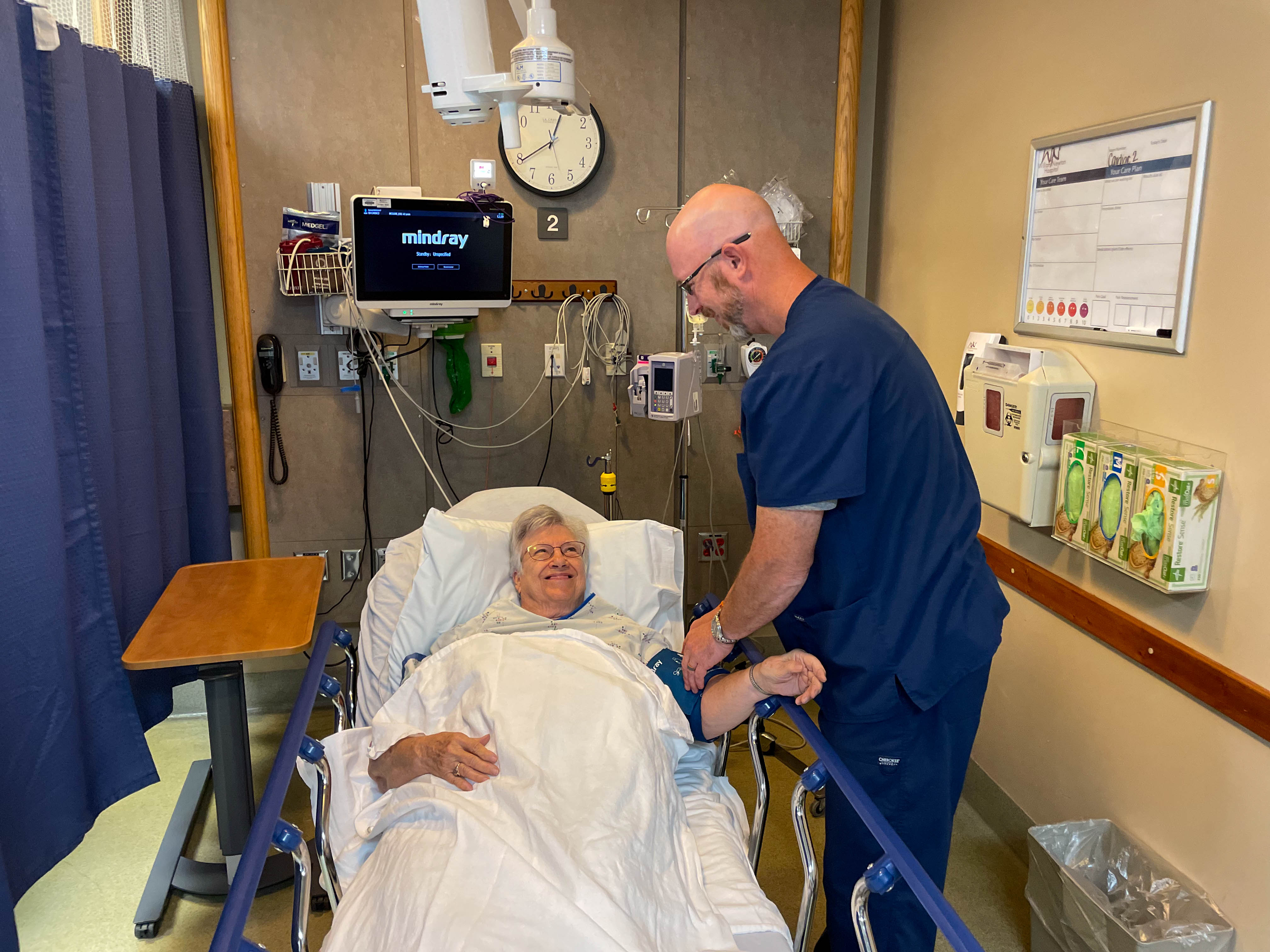
5 minute read
If this is the ER, why does it take so long?
You wake in the middle of the night with horrible chest pain, your child is running a fever, or you fell earlier in the day and you’re concerned about a fracture. Your local doctor is fast asleep, as you wish you were, but you need answers. So, you visit your local emergency room. You arrive, your information is taken, and you are checked in. What comes next, and why do things play out the way they do?
The emergency department (ED or ER) is open 24 hours a day every day, no matter the holiday or the weather. When you have a medical concern, we’re there to try and answer your concerns. Expectations of the ED have changed as people’s perceptions and access to healthcare have changed. However, the base reason for the ED is to rule out emergency conditions. After checking in with registration, you will be triaged. Certain conditions or concerns (such as stroke symptoms, chest pain, or trauma) get a higher level of priority and attention. This isn’t to say your concern isn’t important, but the ED does not operate on a first-come, first-serve basis. Certain situations are more time-sensitive and life-threatening than others. This is where the triage system comes into play.
A triage system helps physicians prioritize by patients’ chief complaints, vital signs, symptoms provided by the patient, and assessment. Depending on the information gathered, this will assist in how quickly you are seen. Those with more life-threatening conditions will be placed at the front of the line while others who have less critical or serious concerns will be addressed secondarily. At times, you are brought straight back into the ED and placed in a room. Other times you may be triaged and asked to return to the waiting room. The ED staff doesn’t like you to wait to be seen any more than you do. Sometimes, there are multiple critically ill patients already in the back and rooms are limited. The tempo of the ED can change quickly — the ED staff does its best to prepare for the next emergent situation. Understanding and consideration are appreciated if you’re asked to return to the waiting room. If something changes, alert registration and you’ll be assessed again for changes. The nurse and provider take the information collected from your assessment and orders will be placed for staff to complete. This can include medication, lab work, radiology exams, or other items. Lab work usually takes around an hour to return, but some tests can take up to days. Radiology exams may have to wait based on lab results. Once completed, all radiology exams are sent to a radiologist, who will view and send a report back. This usually takes around an hour but may be longer if they have a large number of exams to view. The ED works in tandem with other departments to complete your assessment and decide on a course of treatment.
While you wait, other patients come and go. Medical staff are working hard to assess, reassess, complete orders, and discharge, admit, or transfer patients. As new patients arrive or a current patient has a change of condition, the medical crew's response can change. A 2022 study found the national average length of stay in the ED is three hours, 28 minutes. The ED has many working and ever-changing parts. No day, patient, or even shift is ever the same. The staff works diligently to take the best care of you in the most efficient and timely manner possible. Sometimes after all those tests, questions, and medication, the staff doesn’t have an answer. While it's frustrating, our job is to rule out life-threatening emergencies. Follow up with your primary care provider to continue care and answer questions the ED may be unable to.
HELP US HELP YOU! Prepare for your visit to the emergency department.
When our registration staff asks for the following information, they are making sure we have the most up-to-date information in our system. This will help our ER staff provide you with the best care during your visit:
• List of current medication
• Any allergies and your reaction
• Pregnancy status, medical and surgical history
EMERGENCY CARE 101
William Newton Hospital's emergency room in Winfield provides a dedicated team of health professionals experienced in caring for patients with a variety of medical emergencies. The WNH ER is open 24/7 and averages over 9,000 visits each year.
While our emergency room is open to all, we ask you to help keep it available for those who need it most. Some ailments can be addressed by your primary care provider (PCP) while others require immediate care.
PRIMARY CARE: SCHEDULE SOON
• Chronic pain concerns
• Yearly checks ups & well-child exams
• Medication refills or changes
• Minor abdominal pain or constipation/diarrhea/vomiting
• Flu/Covid/RSV concerns and testing
• Pain of the sinuses and ears
• Eye concerns
• Pregnancy tests and confirmation
Need a primary care provider?
Find a clinic near you at wnhcares.org/rural
URGENT CARE: URGENT BUT NOT LIFE THREATENING
• Minor injuries, burns, or fractures
• Flu/Covid/RSV concerns and testing
• Urinary tract infection
• Allergy symptoms
• Occupational medicine for workman’s compensation
• When you can’t get into your PCP promptly
EMERGENCY CARE: URGENT AND LIFE THREATENING CARE
• Sudden onset of chest pain
• Shortness of air or trouble breathing
• Stroke symptoms
• Major traumas/eye and head trauma
• Changes in mental status or loss of consciousness
• Dehydration/heat and cold emergencies
• Large cuts, wounds, or severe burns
• Intense abdominal pain






